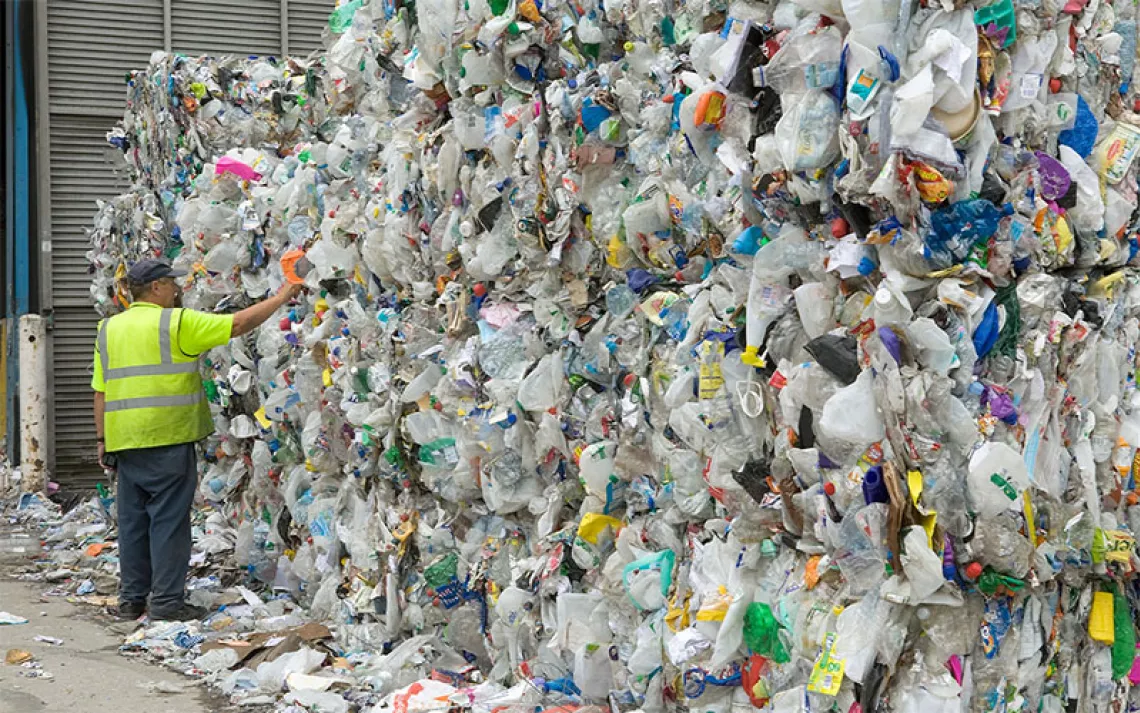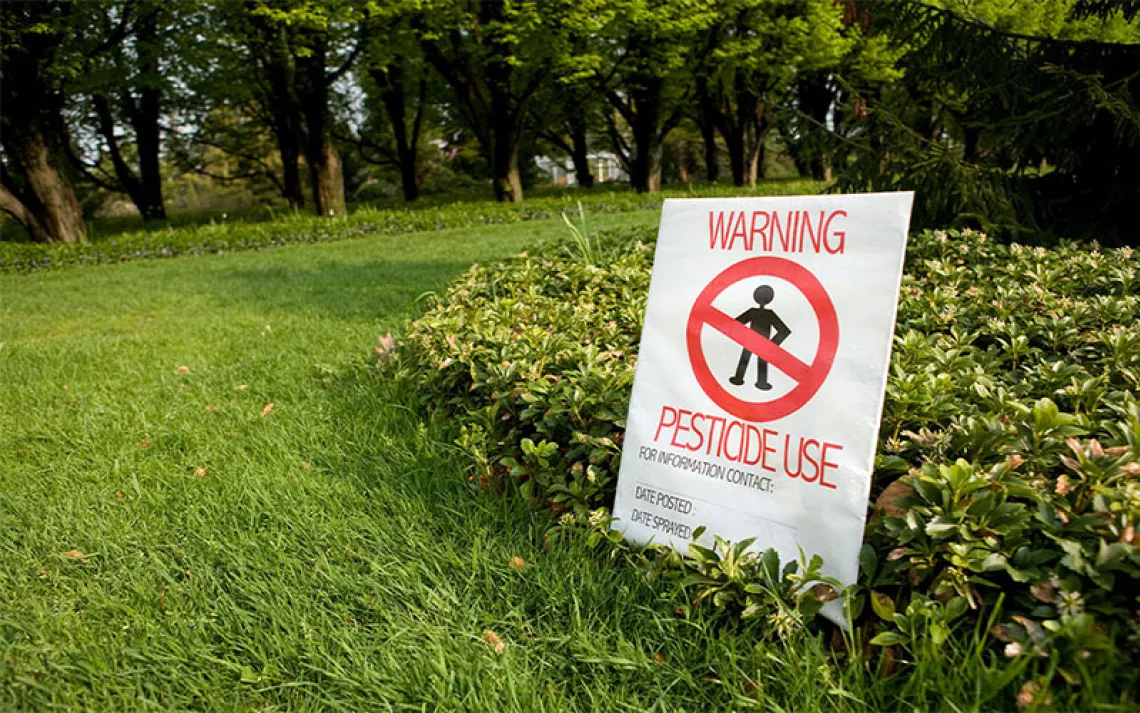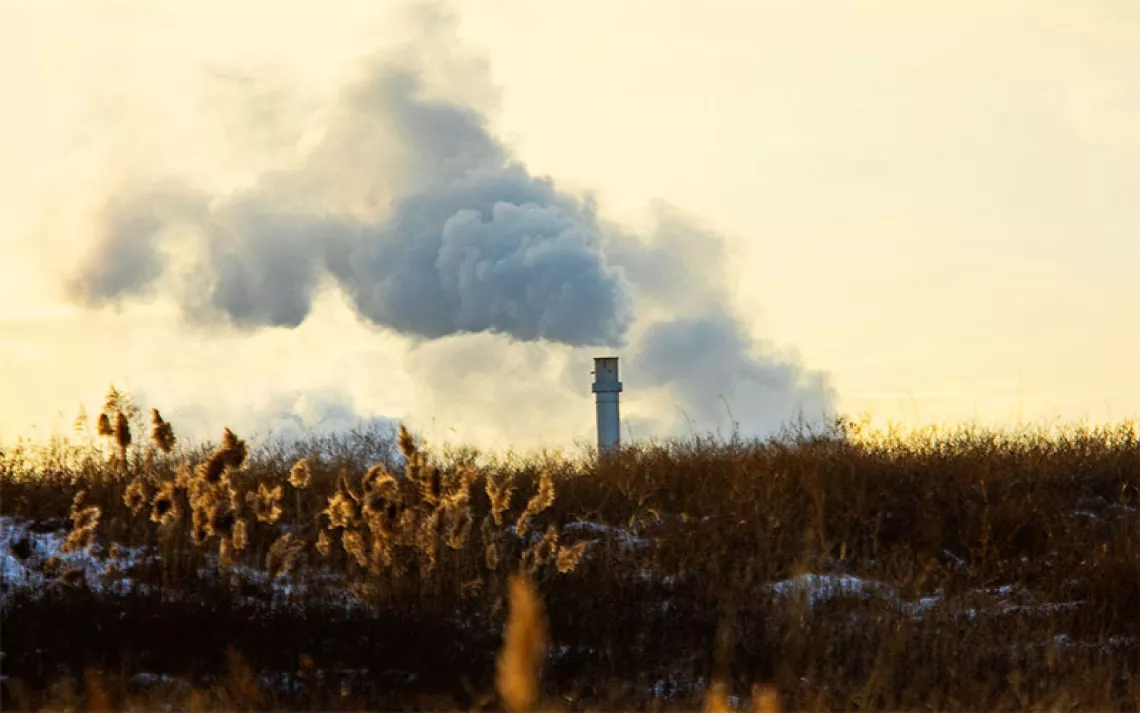Goldman Prize Recipient Rallies Residents of “Cancer Alley”
Sharon Lavigne organized to block a petrochemical plant

Courtesy of Goldman Environmental Prize
In 2015, Sharon Lavigne was in her 33rd year teaching special ed at St. James High School in St. James Parish, Louisiana, when she learned that the school property had been sold to a Chinese chemical company. A new high school would be built 10 miles away in another town. For Lavigne, 69, who has lived her whole life in this neighborhood, it was one more sign of the enormous power that the petrochemical industry wielded over local and state government—to the detriment of her predominantly Black, low-income community along the banks of the Mississippi.
“It was a shock to me and everyone else,” says Lavigne. “I felt like our little community was [dwindling] down, and that nobody was trying to save it.”
Over the next few years, the school auditorium and gym came down and Yuhuang Chemical Industries (YCI) built its $1.85 billion methanol production facility nearby. In 2018, Lavigne launched the community advocacy group Rise St. James, becoming a catalyst for local resistance against chemical plants throughout the region. Recognized for her fight to protect her community, Lavigne was awarded the Goldman Environmental Prize on Tuesday, June 15.
In Louisiana, which has parishes instead of counties, chemical manufacturing is a big part of the economy; in 2018, the sector was responsible for adding approximately $17 billion to the state’s coffers. The petrochemical industry is concentrated along an 85-mile-long stretch of the Mississippi, between New Orleans and Baton Rouge, where there are more than 150 plants. “Exceptional transportation infrastructure and proximity to abundant natural resources in combination with a large selection of identified and certified sites make doing business in Louisiana a desirable choice for chemical processing and fuel industry operations,” touts the World Trade Center New Orleans website. But this region, which includes St. James Parish (population 21,096), is also one of the most polluted areas in the United States and has been dubbed Cancer Alley; suspected and known carcinogens released by the plants include benzene, chloroprene, and ethylene oxide. In 2018, the EPA published a National Air Toxics Assessment showing that, based on their high levels of chemical exposure, residents in some parts of Cancer Alley were more than 100 times more likely to get cancer. According to a 2019 analysis by ProPublica, the state’s Department of Environmental Quality doesn’t take into account the impact of chemicals emitted by the plants cumulatively, making it easier for new plants to get permitted.
Historically, many plantations were located along the Mississippi, and formerly enslaved people continued to live in their environs. The resulting landscape is a patchwork of refineries and chemical plants with agricultural land and homes owned by the same families for generations. In St. James Parish, which has seven districts, most of the riverfront is located in Districts 4 and 5, which also have a majority Black population and a higher rate of poverty than the rest of the parish. In 2014, the year before YCI purchased the District 5 high school property, the St. James Parish council changed the zoning in Districts 4 and 5 with little public input. Some areas that had previously been zoned residential were changed to “residential/future industrial”—thus rolling out a welcome mat for chemical companies in those districts.
Most of the community, including Lavigne, who has six children and 12 grandchildren, were unaware of the zoning change. Busy teaching life skills to special needs students, Lavigne hadn’t been involved with local politics. But in 2015, a friend who was a school administrator got into a contract dispute. To support her, Lavigne started going to school district meetings, where the new chemical plants coming to town were also discussed. She connected with a community organization called HELP (Humanitarian Enterprise of Loving People), where, she explained later at a 2019 hearing at the House of Representatives’ Committee on Energy & Commerce, she learned about “industrial pollution and its harmful effect on our environment and the health of people living in my community.”
As a member of HELP, Lavigne participated in the campaign against the Bayou Bridge Pipeline, the last leg of a massive oil pipeline from North Dakota. (The controversial pipeline, whose terminus is in St. James Parish, was completed in 2019.) But after going to meetings for two and a half years, Lavigne became increasingly frustrated when none of the existing organizations would take a stand against the chemical plants. “Nobody wanted to touch industry. They had this mindset that there was nothing we could do about it, that it was a ‘done deal,’” says Lavigne.
So in spring 2018, when Louisiana governor John Bel Edwards announced the biggest deal of all—a $9.4 billion complex of 14 separate facilities planned by Formosa Plastics that would be built a couple of miles away from Lavigne’s home in District 5—she decided to hold her own meeting. Taking heart from her Christian faith and the activism of her father, who integrated the district’s only school in 1966—she organized a small gathering of 10 people at her home in October 2018. At the second meeting, there were twice that number packed into her garage. They voted to be named Rise St. James, and they took swift and public action soon afterward, marching as close as they could to the Formosa site, bearing signs saying “Rise for Cancer Alley.”
A second battlefront opened up almost immediately. Over Thanksgiving, Wanhua, the world’s largest producer of methylene diphenyl diisocyanate (MDI)—the key ingredient in polyurethane, used to produce plastics, synthetic fibers, and foam—announced plans for a $1.25 billion manufacturing plant in District 4. MDI itself has been linked to asthma and skin irritation, and the byproducts from manufacturing it include the deadly chemical phosgene and numerous carcinogens. Rise St. James’s members mobilized against the Wanhua plant, speaking up at meetings and coordinating with the Louisiana Bucket Brigade and the Tulane Environmental Law Clinic to hand out flyers and canvass neighborhoods. Lavigne asked the parish council and the governor’s office to issue moratoriums on new industrial construction in the parish, but never heard back.
To highlight the plight of her region, she helped form the Coalition Against Death Alley, an alliance with the Concerned Citizens of St. John (of neighboring parish St. John the Baptist), as well as state and national organizations, including the Sierra Club. Coalition members went on a five-day march to the state capitol in May 2019. Meanwhile, the Tulane Environmental Law Clinic filed a lawsuit against the Wanhua plant approval, citing the lack of transparency around the decision-making process. Faced with legal and community opposition, as well as rising construction costs, the company withdrew its plans for the site in September 2019.
In October 2019, Lavigne made the difficult decision to retire from teaching and concentrate on her advocacy work with Rise St. James. The group continues to work on stopping the Formosa plant as well as bringing greater awareness to the larger region. “[The] environmental and public health effects of fossil fuel extraction, processing, and disposal are localized, making them invisible to society at large,” writes law student Courtney Keehan in a 2018 article “Lessons From Cancer Alley: How the Clean Air Act Has Failed to Protect Public Health in Southern Louisiana.” “While American consumers benefit from the products petroleum makes possible, the pollution and toxic waste generated when producing such products is poisoning southern Louisiana.”
On June 19, Rise St. James is holding its second-annual Juneteeth celebration at a cemetery located on the Formosa site—it had to go to court last year for permission—to celebrate Black history and Black ancestors. Lavigne says, “You need to fight for what you believe in and not give up so easily.”
 The Magazine of The Sierra Club
The Magazine of The Sierra Club



